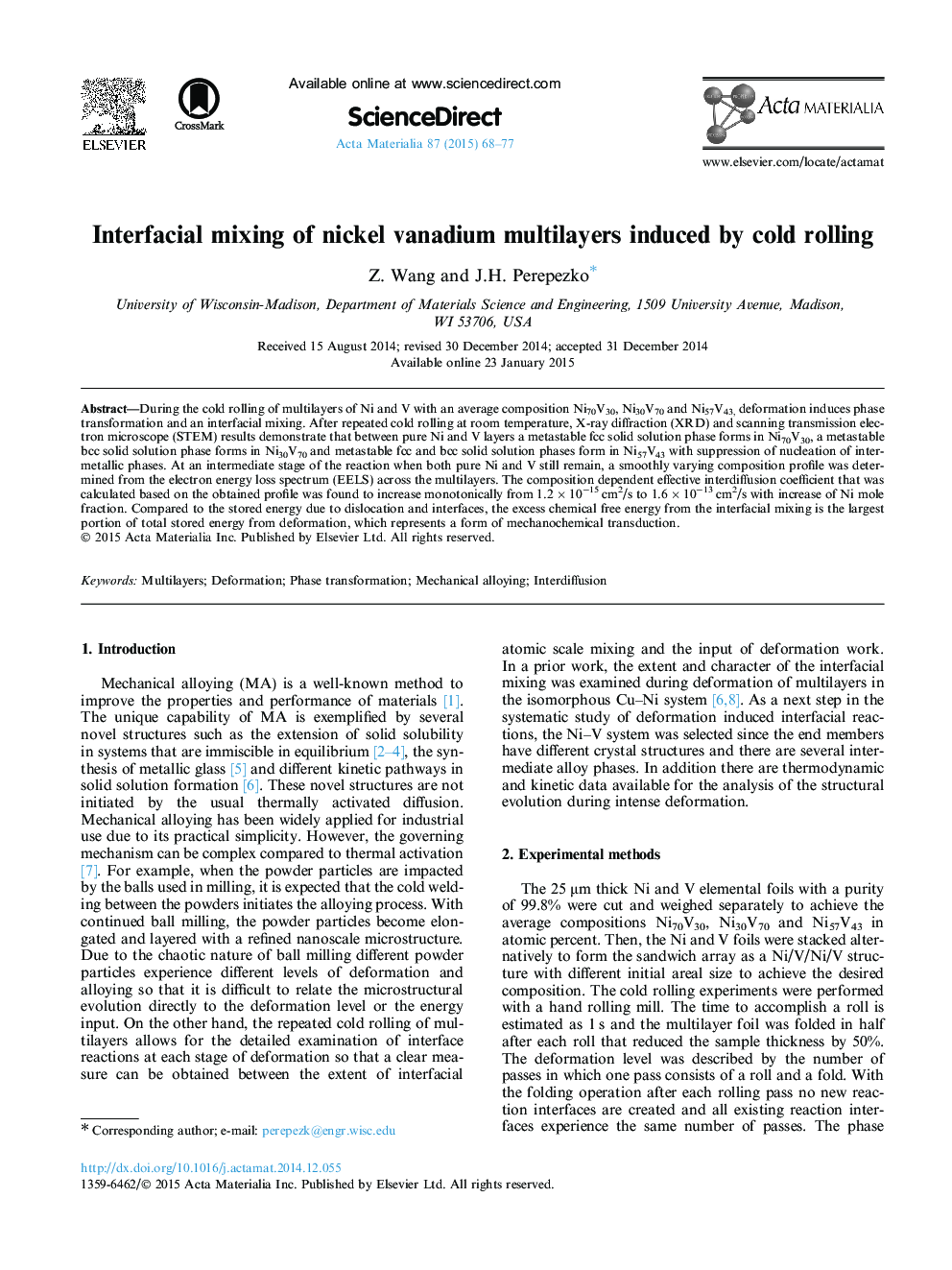| Article ID | Journal | Published Year | Pages | File Type |
|---|---|---|---|---|
| 7880556 | Acta Materialia | 2015 | 10 Pages |
Abstract
During the cold rolling of multilayers of Ni and V with an average composition Ni70V30, Ni30V70 and Ni57V43, deformation induces phase transformation and an interfacial mixing. After repeated cold rolling at room temperature, X-ray diffraction (XRD) and scanning transmission electron microscope (STEM) results demonstrate that between pure Ni and V layers a metastable fcc solid solution phase forms in Ni70V30, a metastable bcc solid solution phase forms in Ni30V70 and metastable fcc and bcc solid solution phases form in Ni57V43 with suppression of nucleation of intermetallic phases. At an intermediate stage of the reaction when both pure Ni and V still remain, a smoothly varying composition profile was determined from the electron energy loss spectrum (EELS) across the multilayers. The composition dependent effective interdiffusion coefficient that was calculated based on the obtained profile was found to increase monotonically from 1.2Â ÃÂ 10â15Â cm2/s to 1.6Â ÃÂ 10â13Â cm2/s with increase of Ni mole fraction. Compared to the stored energy due to dislocation and interfaces, the excess chemical free energy from the interfacial mixing is the largest portion of total stored energy from deformation, which represents a form of mechanochemical transduction.
Related Topics
Physical Sciences and Engineering
Materials Science
Ceramics and Composites
Authors
Z. Wang, J.H. Perepezko,
